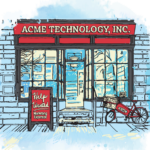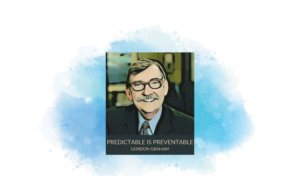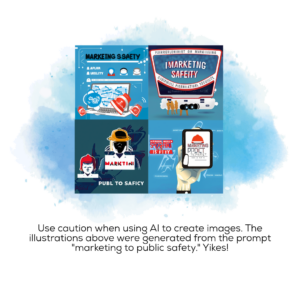
Marketing budgets and resources are limited. As are the time and attention of your public safety customers. So when you do manage to capture the interest of your target audience, it’s important that your marketing campaigns deliver the right message.
Public safety leaders are trained to make quick, decisive choices. If your marketing messaging misses the mark the first time, you may not get another opportunity to pitch your product, service or technology. Companies new to the public safety sector often have trouble calibrating their marketing initiatives to the proper scope. And these miscalculations make it more difficult to earn the trust of key public safety decision-makers.
So how do you know where and how to focus your marketing efforts in the public safety ecosystem? Is it better to adopt a local or regional approach to your brand-building and product marketing? Or should you have a broader aim and take your campaigns national?
As with many things in marketing, the answers are nuanced. Which is why the most common reply to such questions is: It depends.
The truth is, neither approach is better; there’s a time and place for each type of marketing campaign. And when it comes to public safety marketing, it’s often best to take a two-pronged approach.
Public Safety Marketing Campaigns: It’s Pick-And-Choose, Not Either/Or
Getting it right in public safety marketing requires a thorough understanding of how public safety leaders learn about innovation and new technologies in their respective fields.
Public safety leaders are a fairly small and close-knit group. While they represent several different areas of expertise (fire, law enforcement, EMS, 911), they often approach their work with a similar mindset and contend with many of the same organizational and operational challenges.
So when a public safety leader needs to make a decision about equipment, software or process changes, they want to hear from fellow public safety leaders about what worked (or didn’t) for them. They trust each other, especially when that endorsement comes from a leader in their discipline. At RedFlash,we call this “peer proof” — leveraging the power of user stories to convey the value and effectiveness of a product or service. In many cases, that’s how public safety departments learn about new technology and methods that boost their capabilities and make their jobs easier: from each other.
Frequently, local departments look to national agencies or media for guidance in understanding new technology trends. However, their actual purchasing decisions are more often and more directly influenced by seeing a new solution in action. The fact that public safety agencies must often work together means they put a premium on equipment and technology that’s compatible with another discipline’s tech stack. So, if a respected local police department is using a new radio system, its neighboring agency is more likely to consider implementing that same solution.
Experienced public safety marketers understand these insights and know to apply them during the planning stages of their marketing campaigns. That’s how they make the decision about both when to go national and where to focus locally, if the approach includes both.
In most cases, national campaigns are used to drive awareness and educate your audience about your product/service and brand. Local campaigns are deployed to drive actionable, qualified leads on a regional basis. Being proficient at both helps you get a leg up on most other newcomers to the public safety space and better compete with the established players.
Going National: Why and How
A national reputation can greatly help your regional efforts. If you’re hoping to make a splash with a new product or solution, you’d do well to soften up the ground for your local or regional pitches with a national campaign. After all, in public safety, “new” doesn’t always equal better. In fact, in many cases, implementing a new system means taking on considerable risk.
You want to be able to put administrative decision makers at ease. One way to do this is by making your product and brand known widely. And if you don’t yet have a customer base to speak for you, national associations and industry media outlets are your best opinion makers.
Some National Public Safety Associations and Media
Sponsorships and/or a presence at conferences and trade shows are great ways to establish your brand and offering. Just remember to take things slowly if you are new to the scene. It’s probably going to take being seen at several industry events before anyone accepts you as part of the vendor community and takes your pitch seriously. In these scenarios, the best thing to do is keep the conversation informational and educational. Get to know your prospects, and let them get to know you.
Industry media are another way to build a national reputation. You don’t always know where your product or service might be most readily adopted. Outlets with national reach can help reveal where your opportunities may exist. By marketing on the national level, you can quickly find out which regions have the strongest demand. Then you can focus on those counties, states and regions. (P.S. In addition to paid advertising and sponsorships, don’t forget the idea of working with your customers to create compelling editorial content.)
Public Safety Marketing at the Local and Regional Level
Sometimes you need a shotgun. Other times, a rifle is the tool of choice. The same reasoning applies to national and local marketing campaigns.
National campaigns have wide reach and feature broad, informational messaging. They drive awareness and uncover opportunities. But actual selling to public safety leaders requires a more targeted and tailored message.
Before you can start tailoring, however, you need to decide where you are going to focus your sales efforts first. How do you choose where to start?
1. Go Where You Have Traction
Those national marketing campaigns can certainly help you identify geographic areas with demand for your product or service. At RedFlash, we tell our clients to start where the greatest opportunity exists — and that’s typically close to your existing customers.
Remember that new radio system the neighboring police department coveted? They’re probably an easier sell. There’s a good chance the other local emergency response agencies might have some interest as well. Work with your customers in a certain area to gather testimonials and case studies of their experience with your offering. Use those to market to other prospects in the area, which could include targeted 1:1 outreach and/or email and paid social efforts that are geo-targeted. This way, prospects see that peer proof from local departments and leaders, which goes a long way in getting their attention and building trust in the product or software you have to offer.
2. Make More Friends Locally
Local references and use cases are excellent marketing tools. But you can do even more to set yourself up for success wherever you choose to operate geographically. Establishing a presence with state and regional public safety associations and local unions is something we often recommend to our clients.
Forging these relationships can strengthen your ties to your customers’ communities. And that can help your brand be seen not just as a vendor but as a community partner invested in your customers’ successes. Earning goodwill is an evergreen winning strategy. So sponsor the local public safety golf tournament. Do it expecting nothing in return. And guess what? The business will come.
3. Understand Regional Needs and Nuances
To be effective at the local and regional levels, you need to know and account for the region-specific concerns and pain points of your prospects. If your target area is in Florida, for example, you might talk about hurricanes in your campaign or product messaging. In the Midwest, you may adapt your campaign theme for tornadoes and snow storms. (We know it sounds obvious – yet we see lots of companies overlook the simple things.)
We also advise paying close attention to regional and state public safety legislation and funding initiatives. Staying well-informed on these fronts can help you further understand public safety priorities at the local level and identify future opportunities.
4. Tailor Your Messaging
Effective public safety marketing at the local level goes beyond recognizing regional weather patterns of course. Community size is also an important consideration. There are many differences in the makeup of rural, suburban and urban communities. And how public safety is managed in communities of varying sizes also differs greatly (for example, cities vs. counties vs. districts).
Your marketing campaigns should accurately depict the role of public safety in the campaign’s target area. They should also incorporate culturally appropriate language and images for the community and audience you’re attempting to reach.
National and Regional Public Safety Marketing Go Hand-in-Hand
There is a right time for both national and local public safety marketing campaigns. National campaigns are terrific at building your brand and identifying where your products or services might be needed. But you need messaging tailored for the local public safety market in order to maximize your sales opportunities. An effective public safety marketing strategy takes advantage of both broad appeal and precise, targeted messaging approaches to reach your marketing goals.
If you’re looking for help creating or executing a strategy for national or local outreach to public safety leaders, we’d love to start a conversation.
Related Posts
-
It’s easy in tough economies to want to bypass strategy and go straight to tactics.…
-
We’ve all been there. You work for months on a marketing campaign, only to deploy…
-
No doubt you know all about the Great Resignation. According to the latest Job Openings…









 The RedFlash Group is a GSA Contract Holder under Schedule 541, Advertising and Integrated Marketing Solutions
The RedFlash Group is a GSA Contract Holder under Schedule 541, Advertising and Integrated Marketing Solutions